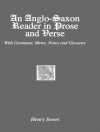Una trama llena de situaciones límite, una escritura cultivada y puntillosa y unos personajes descritos con simpatía y vigor realzan el valor de esta novela.
Por sus obligaciones como mujer de un pastor unitario, Elizabeth Gaskell hubo de conocer de primera mano las condiciones de vida de los obreros de Manchester y las consecuencias de la revolución Industrial. En un ambiente de tensión social, agravado por la pobreza y el desempleo, se inscribe la peripecia de una muchacha que coquetea con el apuesto hijo del patrono y desprecia al pretendiente que daría su vida por ella.
Acquista questo ebook e ricevine 1 in più GRATIS!
Lingua Spagnolo ● Formato EPUB ● ISBN 9791259714435 ● Dimensione 0.9 MB ● Casa editrice Greenbooks Editore ● Pubblicato 2021 ● Scaricabile 24 mesi ● Moneta EUR ● ID 7845132 ● Protezione dalla copia senza












